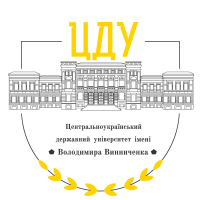COMPOUND NOUNS-NEOLOGISMS WITH THE DOMINANT MONOSEMIC CONSTITUENT IN THE SENTENCE STRUCTURE OF THE GERMAN PRESS: SYNERGY OF EFFORT MINIMIZATION
DOI:
https://doi.org/10.32782/2522-4077-2024-208-20Keywords:
compound noun-neologism, dominant constituent, monosemic model of the word, semantic volume decoding, human mental lexicon, linguistic synergy, principle of effort minimizationAbstract
The work is one of the stages of the study of the generation and decoding of complex nouns-neologisms with different semantic volume of their dominant component in simple and complex sentences of the modern German press from the standpoint of linguistic synergy. In the proposed article, such a synergistically directed analysis is focused on noun composites-neologisms with a dominant constituent, which is represented in the dictionary by the monosemic model of the noun. The statement, which is methodologically important in the study declares that the driving factor is the synergistic law of language energy conservation and effort minimization, which directs the mental lexicon of a person to decode complex nouns-neologisms with the dominant semantic volume of the monosemic word model. In the synergistic understanding, parallels are drawn between the dictionary as a representative of language generalization about the structured sum of knowledge of the extra-linguistic reality and the mental lexicon, which is not an arbitrary accumulation of entries, but constitutes a structured hierarchical system of such entries. The results obtained on the basis of the synergistic-quantitative approach were extrapolated to synergistic models in the correlation of decoded nominations of the dominant component of the monosemic format with simple and complex sentences of the German press. The synergistically directed hypothesis was confirmed that the involvement of the nearest semantic dimension of the monosemic model of the noun for the dominant component of innovative composites in simple and complex syntactic constructions successfully contributes to the needs of preserving linguistic energy and minimizing efforts for the human mental lexicon in the space of the German world of the press. Such linguistic synergistic exploration opens the prospects of modeling and forecasting the possible lexicalization of complex nouns-neologisms and replenishing Germanic linguistics with new knowledge about the German noun vocabulary.
References
Домброван Т. І. Актуалізація синергетичного підходу в сучасних лінгвістичних дослідженнях. Записки з романо-германської філології. Одеса: Фенікс, 2011. Вип. 26. С. 51–58.
Дребет В. Декодування іменників у німецькомовних текстах художньої прози та преси (синергетично-квантитативний підхід): монографія. Тернопіль: Астон, 2016. 400 с.
Кійко С. В. Мовна і міжмовна омонімія в німецько-українських паралелях: лінгвосинергетичний аспект: дис. ... докт. філол. наук: 10.02.04. Германські мови, 10.02.15. Загальне мовознавство. Чернівці, 2015. 509 с.
Селіванова О. О. Лінгвістична енциклопедія Полтава: Довкілля. Київ, 2012. 844 с.
Altmann G. Modelling diversification phenomena in language. Diversification Processes in Language: Grammar. Hagen: Margit Rottmann Medienverlag, 1991. S. 33–46.
Auch zwischen Wien und Athen ist 2020 nicht 2015. URL: https://www.faz.net/aktuell/politik/ausland/migration-auch-zwischen-wien-und-athen-ist-2020-nicht-2015-16673230.html
Duden Onlinewörterbuch. URL: https://www.duden.de
Fleischer W. Kommunikativ-pragmatische Aspekte der Wortbildung. Sprache und Pragmatik: Lunder germanistische Forschungen. 1979. №48. S. 317–329.
Haken H. Beiträge zur Geschichte der Synergetik: allgemeine Prinzipien der Selbstorganisation in Natur und Gesellschaft. Wiesbaden: Springer Spektrum, 2016. 328 S.
Hat die AfD in Hanau mitgeschossen? Die deutsche Politik sucht nach Erklärungen für den Anschlag. URL: https://www.nzz.ch/international/hat-die-afd-in-hanau-mitgeschossen-die-deutsche-politik-sucht-nacherklaerungen-fuer-den-anschlag-ld.1541933
Köhler R. Zur linguistischen Synergetik: Struktur und Dynamik der Lexik. Bochum: Studienverlag Brockmeyer, 1986. 200 S.
Löbner S. 2015. Semantik: Eine Einführung. 2., aktualisierte und stark erweiterte Aufl. Berlin/Boston: Walter de Gruyter. 462 S.
Maineke E. Das Substantiv in der deutschen Gegenwartssprache. Heidelberg: Universitätsverlag WINTER, 1996. 496 S.
Meindl C. Methodik für Linguisten : Eine Einführung in Statistik und Versuchsplanung. Tübingen: Narr Francke Attempto Verlag, 2013. 302 S.
Polenz P. Deutsche Satzsemantik. Berlin–New York: Walter de Gryeter, 2012. 389 S.
Schwarz-Friesel M. Einführung in die Kognitive Linguistik. 2. überarbeitete Aufl. Tübingen und Basel: Francke Verlag, 1996. 238 S.
Serebrennikow B. A. Allgemeine Sprachwissenschaft: Die innere Struktur der Sprache: in drei Bänden. München–Salzburg, 1975. Bd. II. 521 S.
Whorf B. L. Sprache, Denken, Wirklichkeit: Beiträge zur Metalinguistik und Sprachphilosophie / hrsg. von B. L. Whorf und übers. von P. Krausser. Reinbek bei Hamburg: Rowohlt, 1963. 157 S.
Zipf G. K. Human behavior and the principle of least effort. Cambridge: Addison–Wesley, 1949. 573 p.








